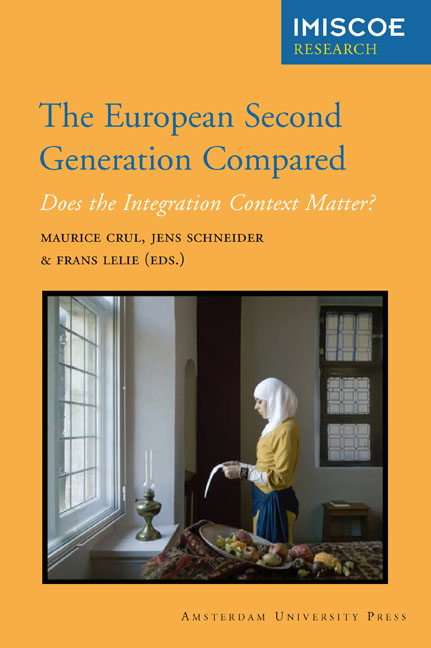Book contents
- Frontmatter
- Contents
- Acknowledgements
- 1 Introduction
- 2 Comparative Integration Context Theory: Participation and Belonging in Diverse European Cities
- 3 Research Methodology
- 4 The TIES Respondents and their Parents: Background Socio-Demographic Characteristics
- 5 School Careers Of Second-Generation Youth in Europe: Which Education Systems Provide the best Chances for Success?
- 6 Assessing the Labour Market Position and Its Determinants for the Second Generation
- 7 Union Formation and Partner Choice
- 8 Identities: Urban Belonging and Intercultural Relations
- 9 Ways of ‘being Muslim’: Religious Identities of Second-Generation Turks
- 10 Conclusions and Implications: The Integration Context Matters
- List of Contributors
- Other IMISCOE titles
2 - Comparative Integration Context Theory: Participation and Belonging in Diverse European Cities
Published online by Cambridge University Press: 09 January 2021
- Frontmatter
- Contents
- Acknowledgements
- 1 Introduction
- 2 Comparative Integration Context Theory: Participation and Belonging in Diverse European Cities
- 3 Research Methodology
- 4 The TIES Respondents and their Parents: Background Socio-Demographic Characteristics
- 5 School Careers Of Second-Generation Youth in Europe: Which Education Systems Provide the best Chances for Success?
- 6 Assessing the Labour Market Position and Its Determinants for the Second Generation
- 7 Union Formation and Partner Choice
- 8 Identities: Urban Belonging and Intercultural Relations
- 9 Ways of ‘being Muslim’: Religious Identities of Second-Generation Turks
- 10 Conclusions and Implications: The Integration Context Matters
- List of Contributors
- Other IMISCOE titles
Summary
Introduction
In the last fifteen years a great deal of research about the second generation has appeared in academic journals and books. These publications have stirred a wider theoretical debate about assimilation and integration. Scholars in the United States have been at the forefront of studies producing both research results and theoretical models on the subject of the second generation. Europe's scholars are now catching up, starting to respond to the theoretical notions produced within the North American context, notably where the US-born children of Mexican and Asian immigrants dominate discussion about the second generation. In Europe, these groups are, as a whole, ethnically very varied, the largest populations therein having parents who either come from former European colonies or were recruited as labour migrants. Compared to those in the US, Europe's labour migrants have notably less diverse economic backgrounds. Not all, but most, had come from countryside villages and hardly had any schooling.
New and segmented assimilation theory
In the US, a number of scholars have argued that the linear model of assimilation is less likely to correspond with today's more complex reality (Portes & Rumbaut 2005) due to fundamental economic changes in society since the formulation of classical assimilation theory, alongside the growing diversity of immigrants in terms of social class and nationality. New theoretical perspectives emerged during the 1990s in the US to reflect this view, beginning with Gans’ (1992) concept of ‘second-generation decline’ and Portes and Zhou's (1993) theory of ‘segmented assimilation’. Both ideas expressed a fair degree of pessimism for the future of some US-born immigrant youth, positing that they could face what Portes and Zhou described as ‘downward assimilation into the urban underclass’, with permanent poverty being a distinct possibility. Compared to the era in which immigration to the US was mainly by ‘white’ Europeans, today we see racial and ethnic discrimination against visible minorities and, on top of that, narrowing labour market opportunities for the second generation. Whereas earlier migrants and their descendants could more confidently aspire to upward mobility within working-class jobs, the advent of an hourglass economy – with fewer middle-ranking posts – has meant fewer opportunities and incentives for less well-educated members of the second generation.
- Type
- Chapter
- Information
- European Second Generation ComparedDoes the Integration Context Matter?, pp. 19 - 38Publisher: Amsterdam University PressPrint publication year: 2013
- 1
- Cited by



